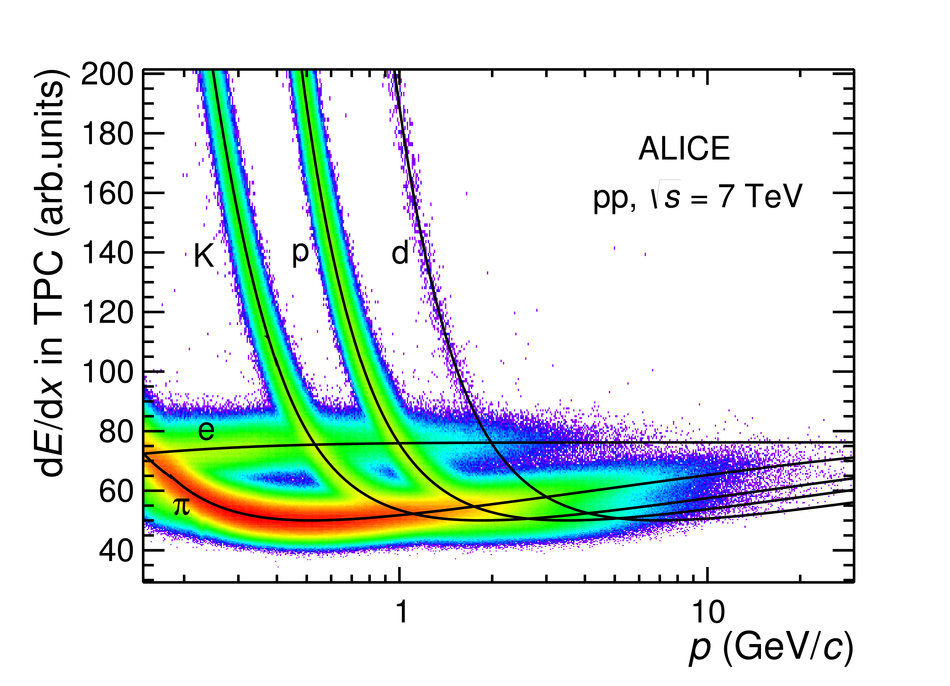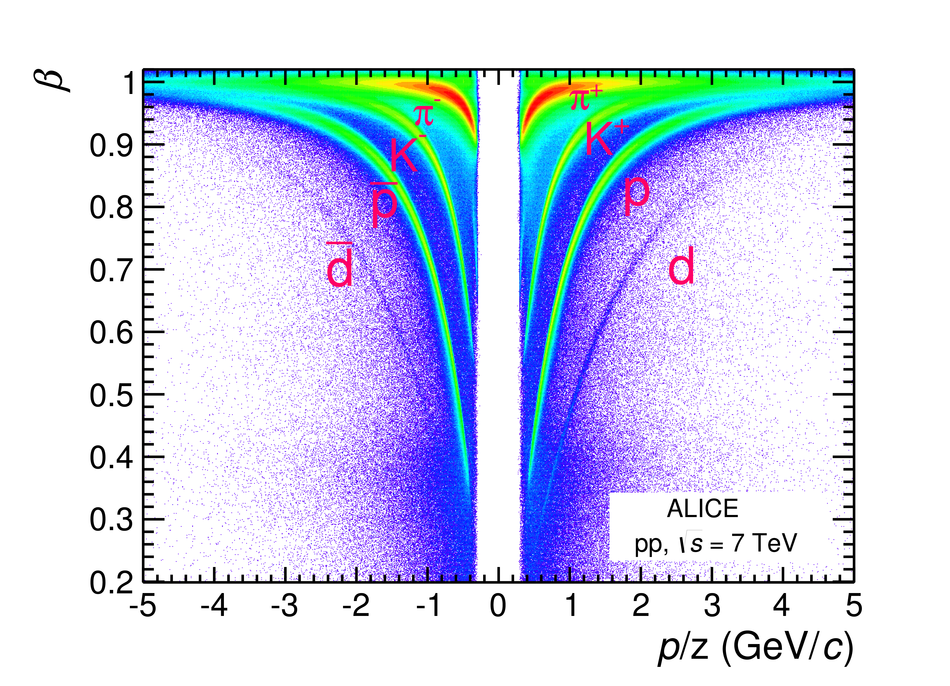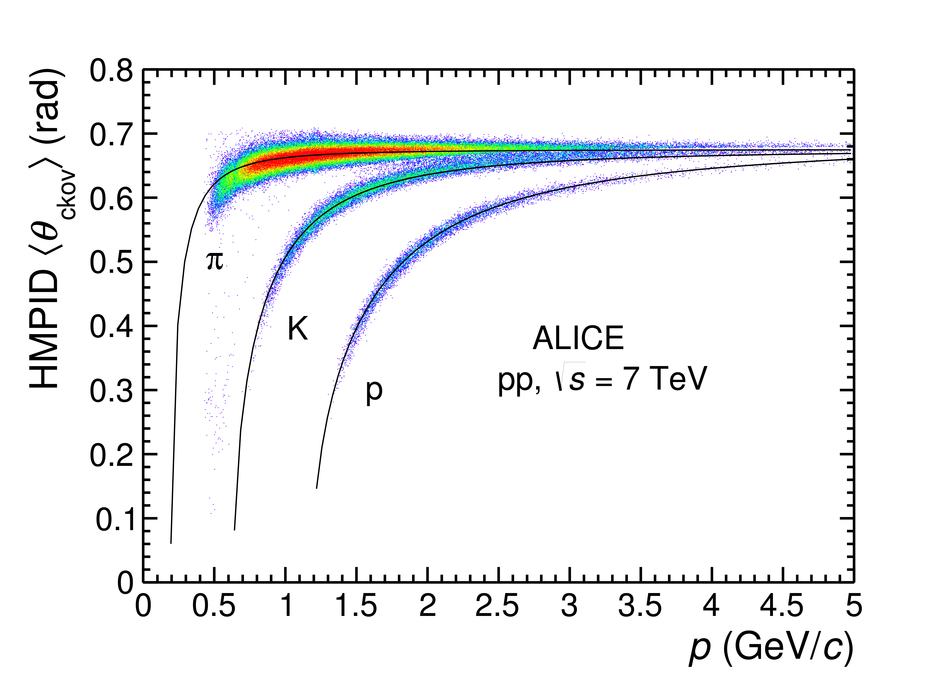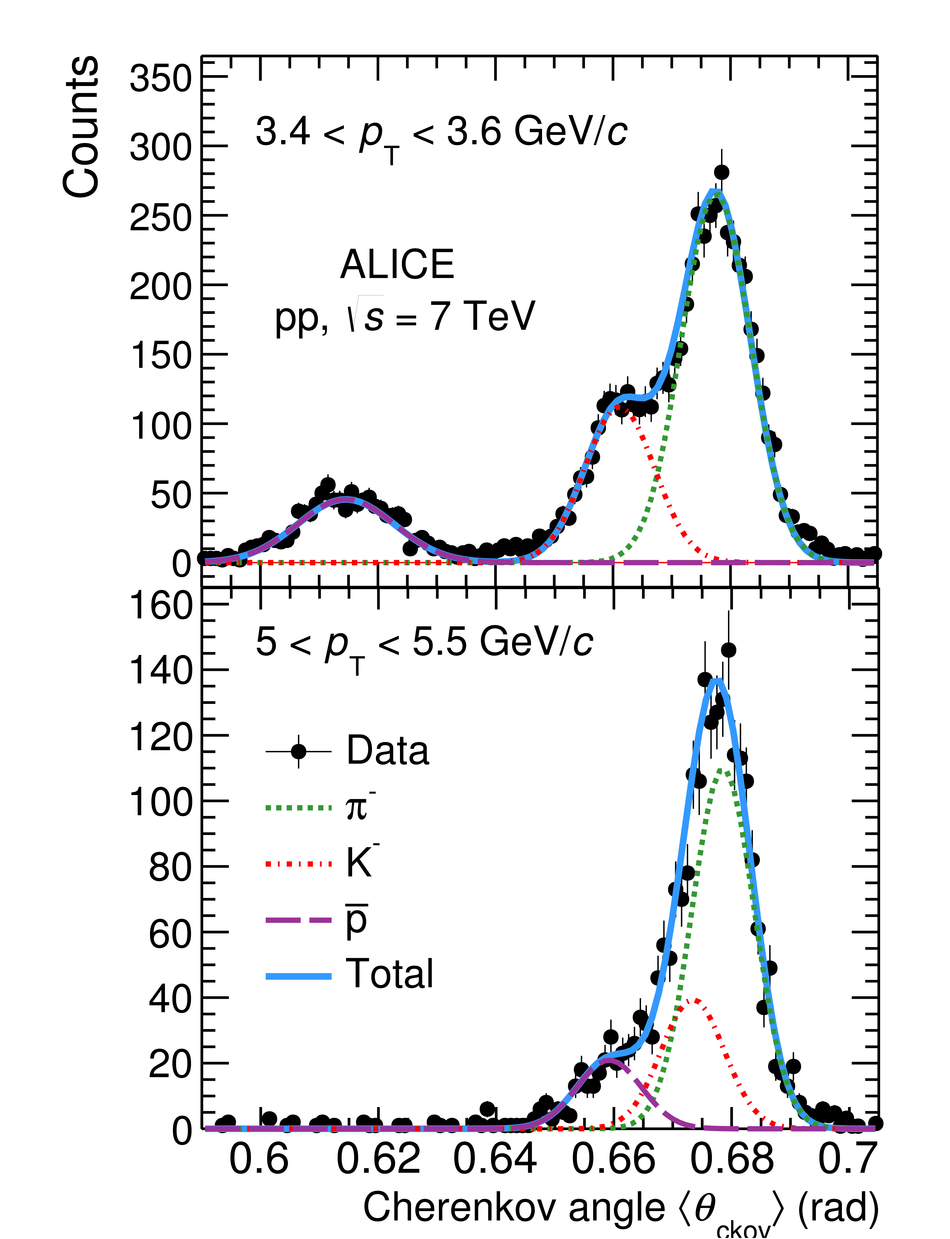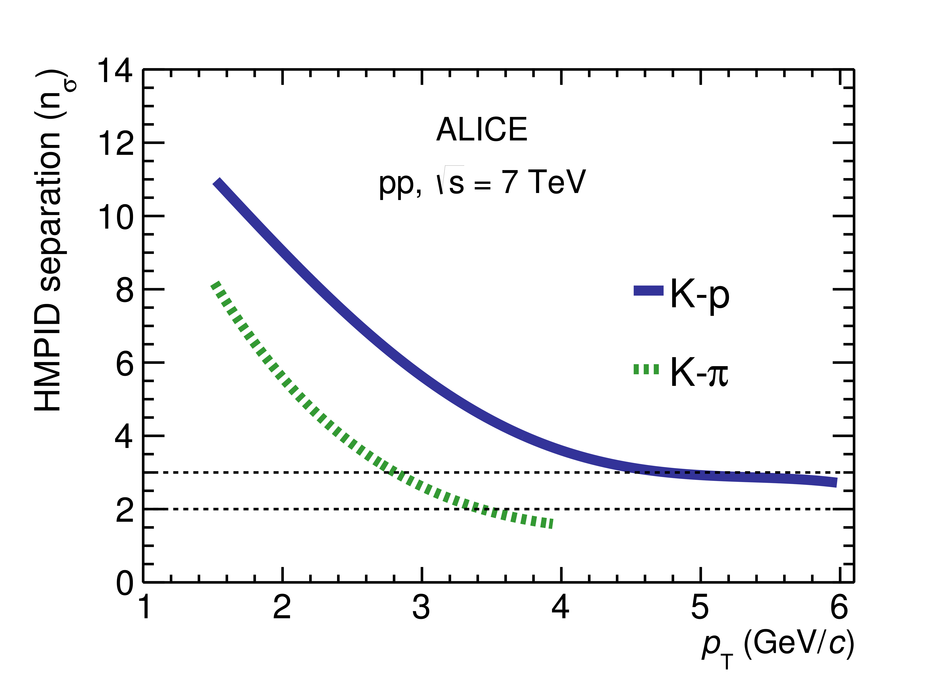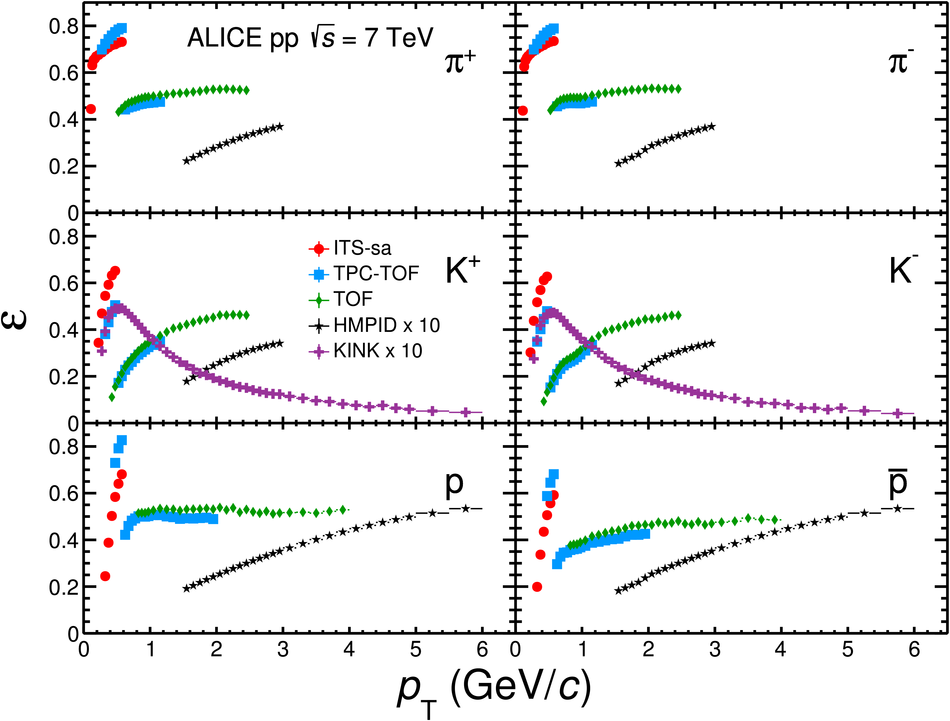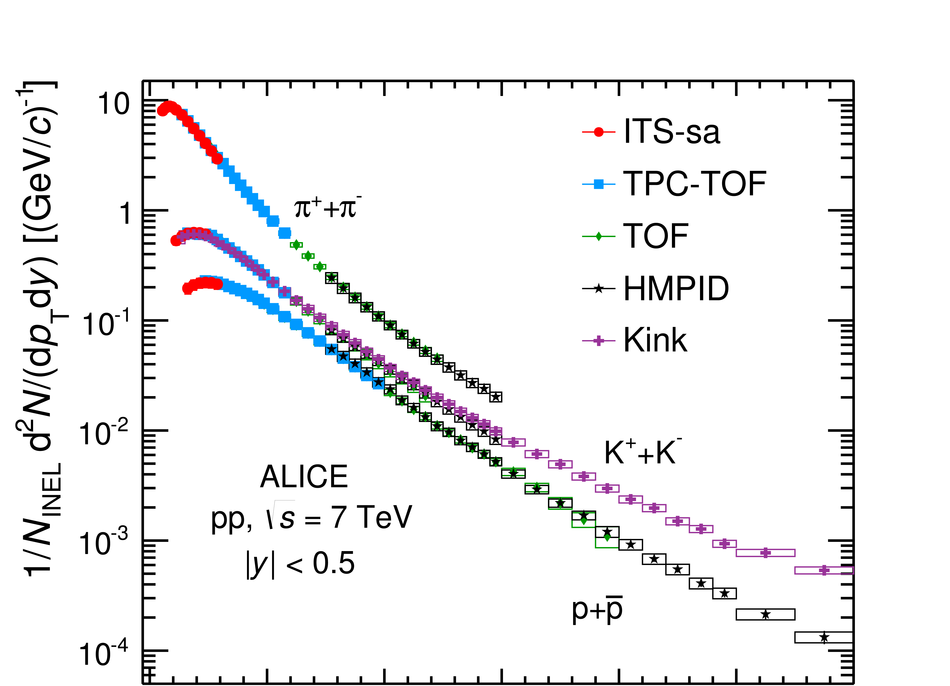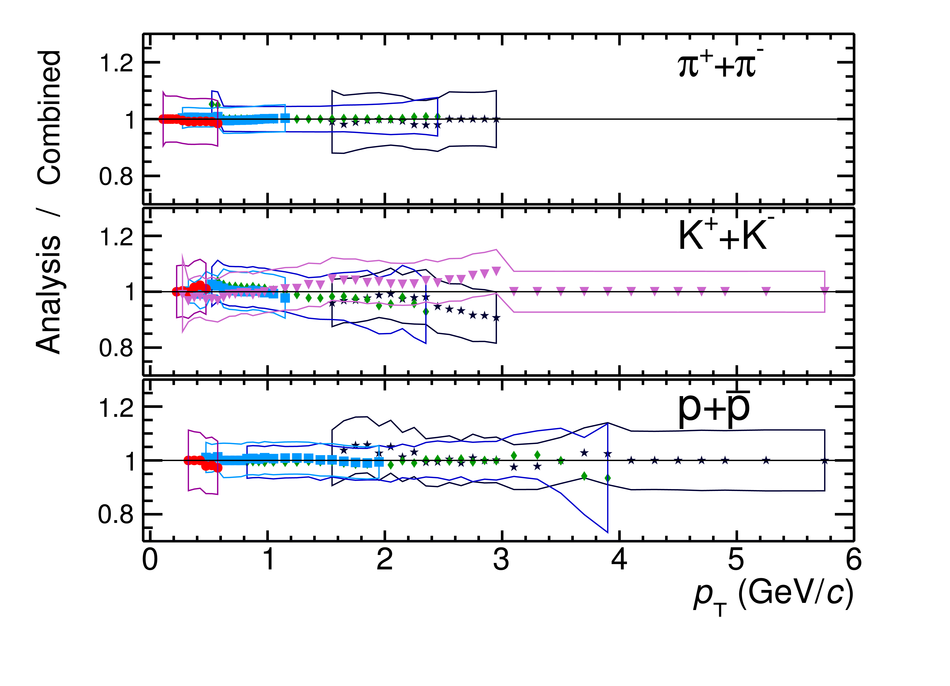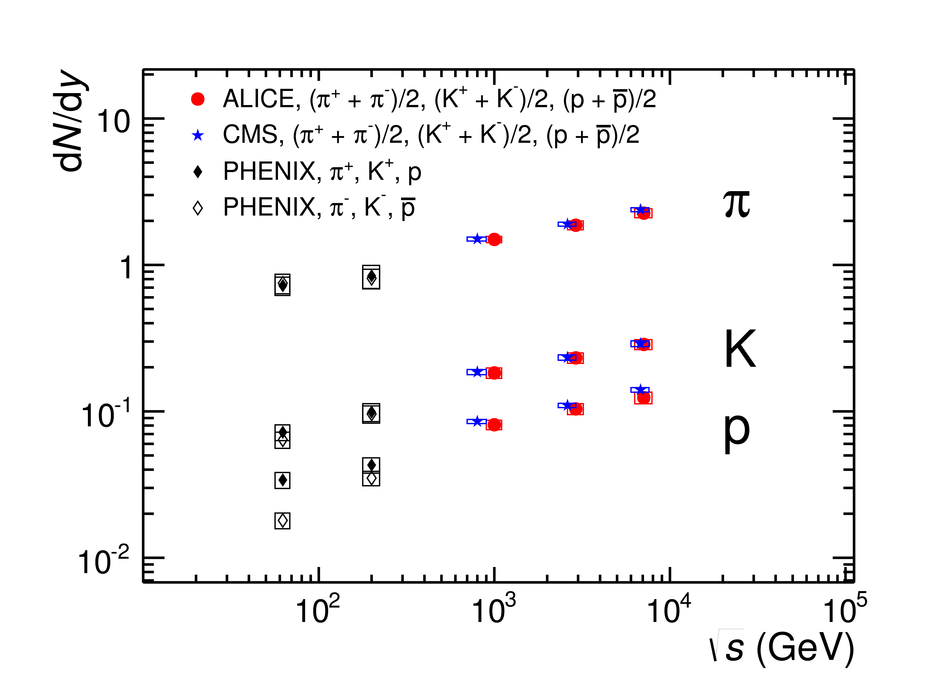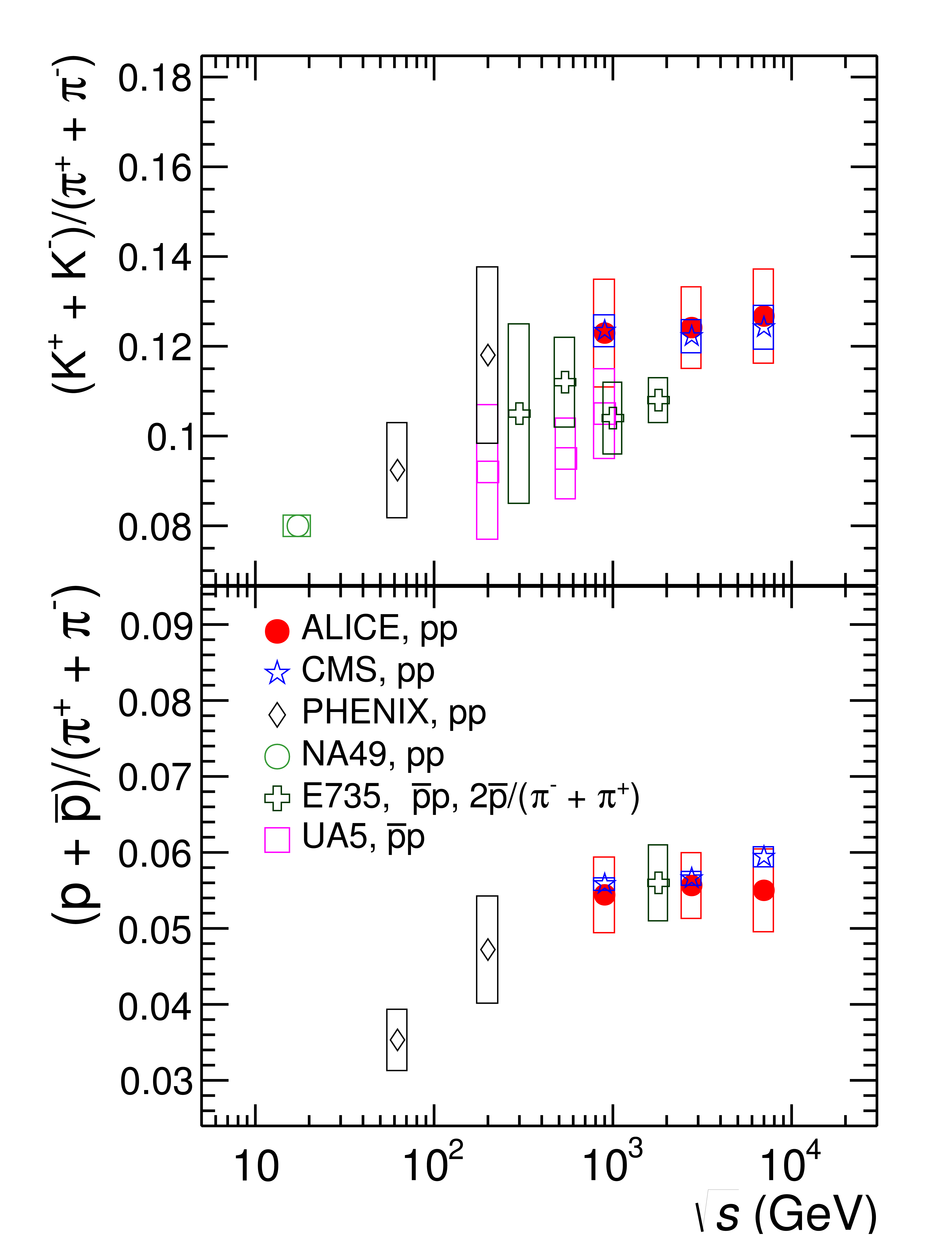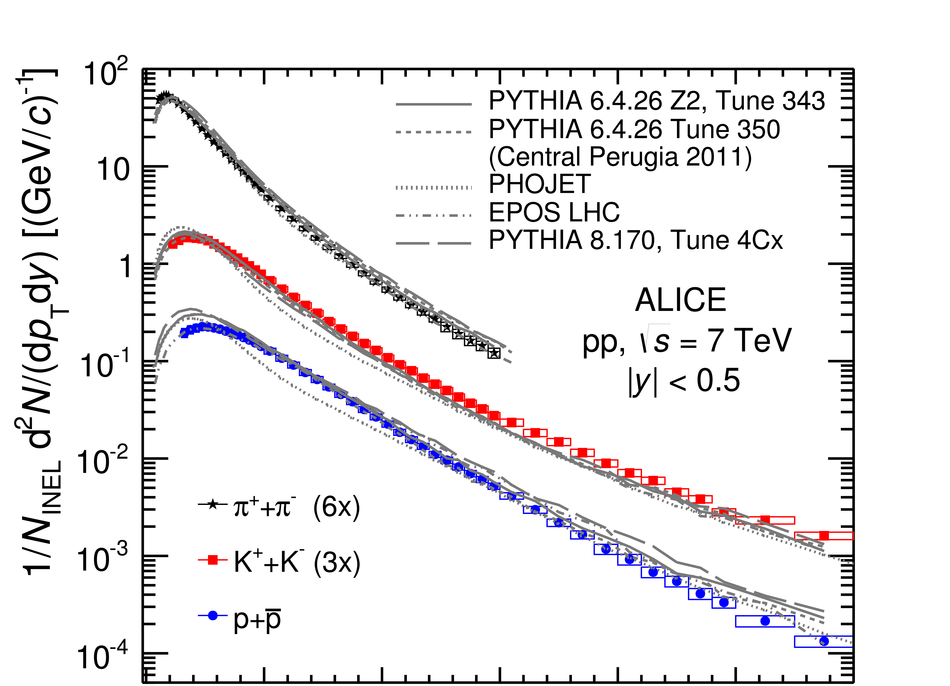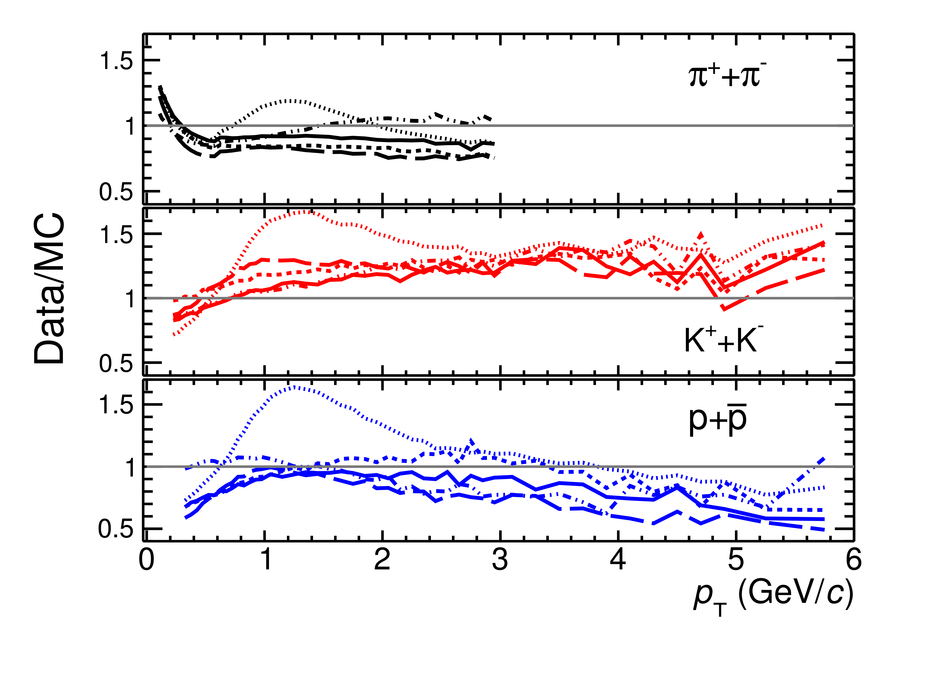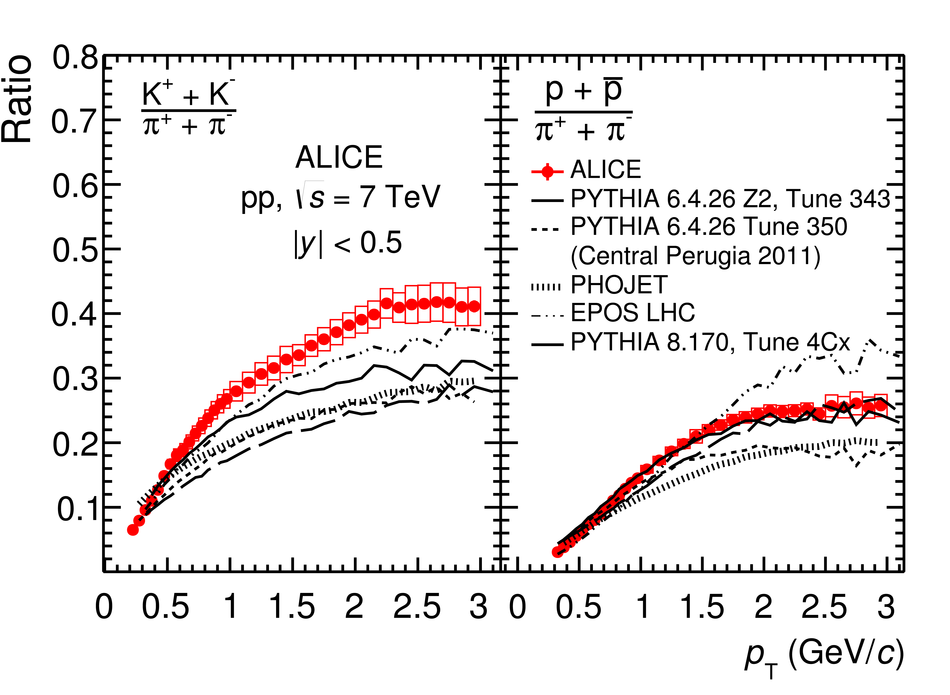The measurement of primary $\pi^{\pm}$, K$^{\pm}$, p and $\overline{p}$ production at mid-rapidity ($|y| < $ 0.5) in proton-proton collisions at $\sqrt{s} = 7$ TeV performed with ALICE (A Large Ion Collider Experiment) at the Large Hadron Collider (LHC) is reported. Particle identification is performed using the specific ionization energy loss and time-of-flight information, the ring-imaging Cherenkov technique and the kink-topology identification of weak decays of charged kaons. Transverse momentum spectra are measured from 0.1 up to 3 GeV/$c$ for pions, from 0.2 up to 6 GeV/$c$ for kaons and from 0.3 up to 6 GeV/$c$ for protons. The measured spectra and particle ratios are compared with QCD-inspired models, tuned to reproduce also the earlier measurements performed at the LHC. Furthermore, the integrated particle yields and ratios as well as the average transverse momenta are compared with results at lower collision energies.
EPJC 75 (2015) 226
HEP Data
e-Print: arXiv:1504.00024 | PDF | inSPIRE
CERN-PH-EP-2015-068


